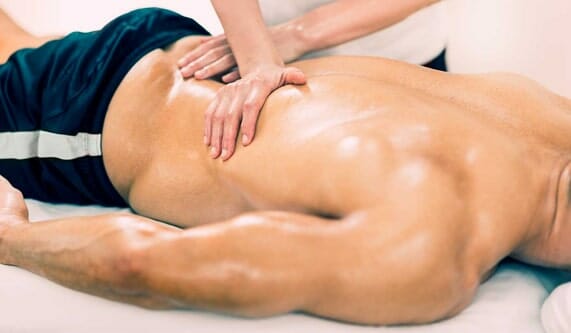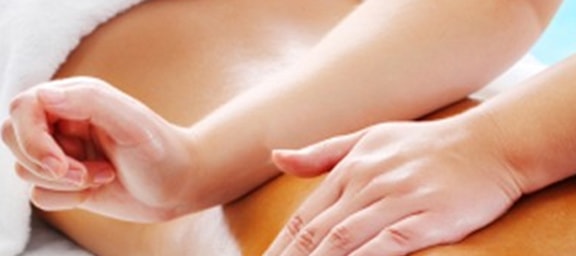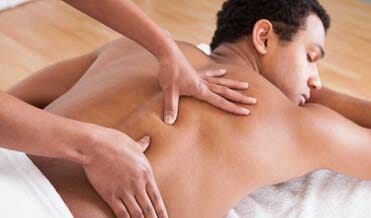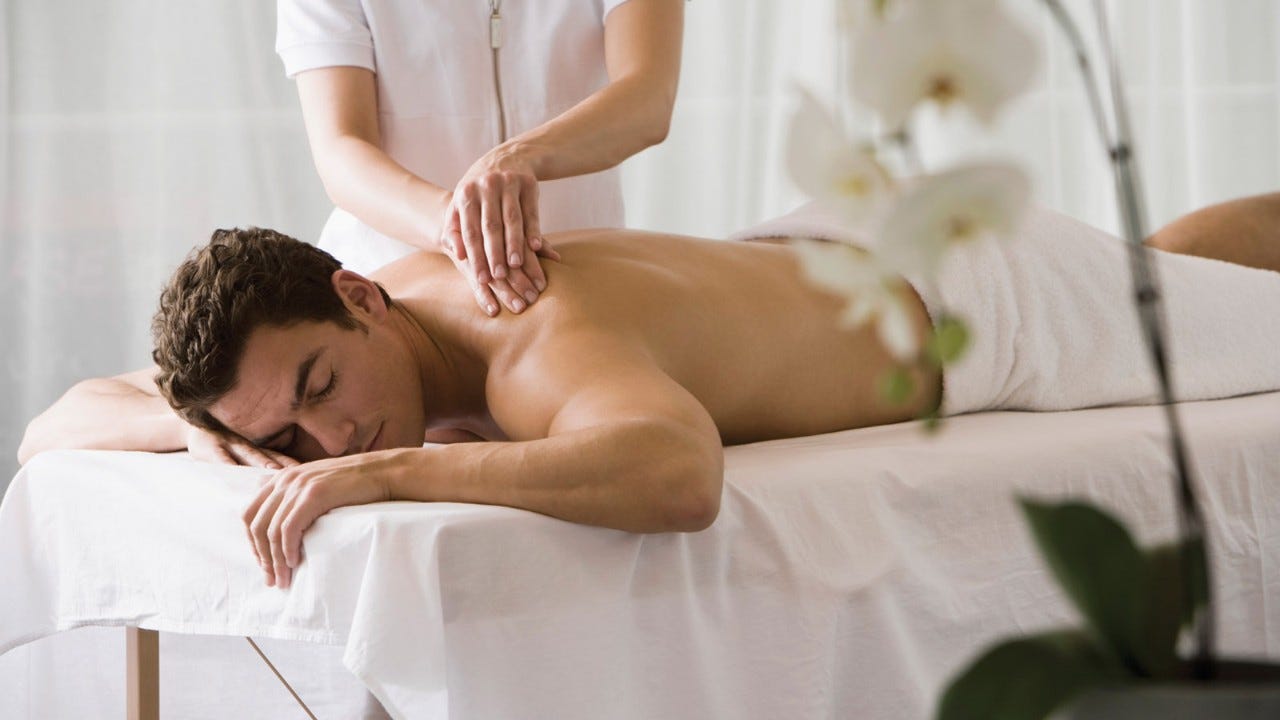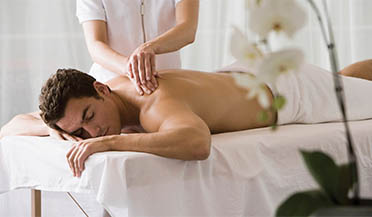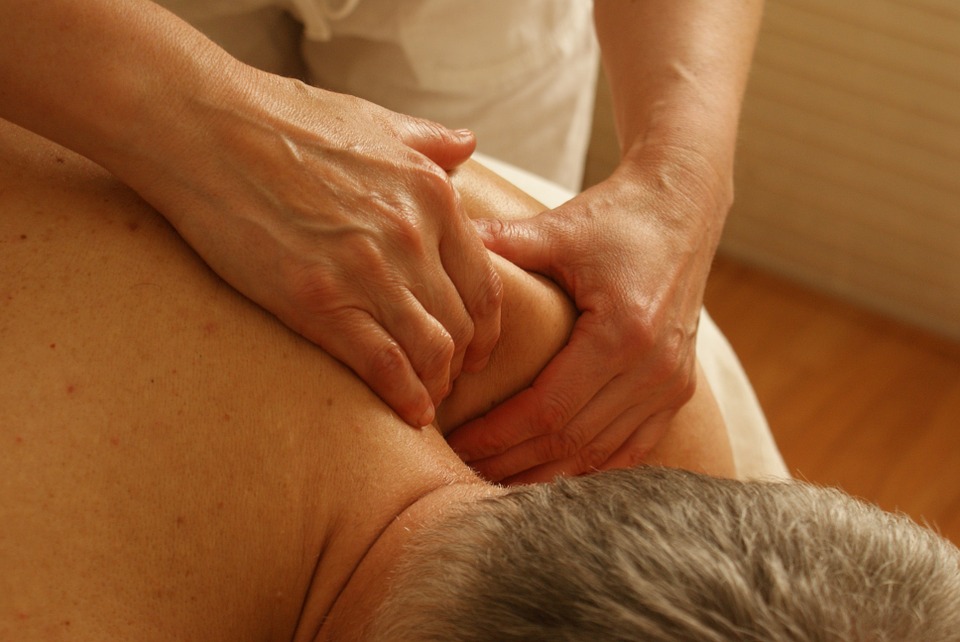Benefits of Thai Massage
Thai Massage is beneficial to all; from the athlete to the elderly. Benefits include :
> Deep relaxation. Pressure on feet and legs is sedating, sometimes inducing hypnotic or altered states of consciousness.
> Releases points of tension in the body which block the natural flow of energy,
> Inducing homeostasis, balance and harmony. Releases stress and increases energy. Increases flexibility and range of motion. Assists alignment and postural integrity of the body.
> Improves circulation.
> Strengthens the internal organs.
> Relieves pain.
> Improves neurological functioning and assists in relieving degenerative conditions associated with the aging process.
> Promotes inner peace and a quiet mind.
People will vary in their response to Thai Massage. A calm and relaxed client will benefit well, some finding a single treatment radically altering their perception of their own body, and therefore their sense of self. However, a tense, rigid client may need more than one or two sessions to feel the same benefits or achieve the same result.
Things to Consider as a Therapist
As a Business
For some of you, this is just the beginning of your journey as a professional therapist. It’s important to learn any therapy correctly if you’re going to take it to the public, but even more importantly, please strive to become a great therapist. Consider all of the following if you’re planning to become a practitioner:
Professionalism
Please dress appropriately. There are plenty of companies who offer therapy uniform and many vary in price and style. Always remember to wash your hands before and after giving a treatment and use soap without a strong scent. The same applies to perfume, some of your clients may be allergic to it or find it overpowering. This may unfortunately spoil their treatment and they may not book again. If you offer a mobile service it may be useful to carry wet wipes with you. Some memberships offer badges and upside-down (nurses) watches which are useful when you cannot see a clock or if you operate a mobile service.
Hygiene
> Scrupulous personal hygiene must be observed. Hands should be thoroughly
> washed and fingernails cleaned
> Oil should be squeezed or poured into hand from the bottle or container to avoid
> Contamination
> Wash headbands between clients or use disposables
> Tie back long hair and remove jewellery
> Roll up long sleeves or wear a short-sleeved tunic
Consultations
Never prescribe if not trained to: You must not prescribe remedies or drugs or use essential oils if you’re not qualified to do so. You can refer your client to a practitioner who is fully qualified if you know one, or suggest they visit a relevant practitioner for a consultation. You could suggest to your client to search for the internet for the association connected to a complementary therapy they are interested in. The associations list practitioners in your area if do not know of any near your client.
Client Record and Treatment Plan
Always start your client’s first treatment by completing with them your Client Treatment Record. Please ask as many questions as you feel appropriate. Please do not expect your client to offer information about them without being asked. For example, you need to check if they are being treated by their GP or another therapist. Are they suffering from any medical conditions, and if so how long have they had it/them? Throughout the discussion you will learn more about your client and can ask them what they would like to achieve from their treatment session. (For forms, please see appendices)
Self-Confidence
Practice as much as it takes for you to feel confident about what you’re doing and saying. A sensitive client may pick up on your lack of confidence. Case studies are not required for this course but they are an excellent way to gain your experience. As a suggestion to start your experience, find about four friends, family members or friends of friends and offer three or more treatments each, say every week. See how confident you feel after these treatments. This will give you an idea of how many more treatments you would like to offer to feel confident enough to take your work out o into the general public and start your advertising.
Sensitivities
Please be aware that your clients will all have different degrees of mobility and paino thresholds. Some clients like a firm massage, others may like it lighter. This can also change each time you treat them, depending on stresses and strains experienced during the time between their last session. Always check your pressure for each treatment and each client. Usually after the first treatment you will get to know them and what they prefer pressure wise. Also be aware that some clients may be shy or embarrassed about areas or parts of their body – this may because of a large scar or something they themselves consider to be unsightly, even if it isn’t. Some clients also do not like to be touched in certain areas of their body as it makes them feel uneasy – it’s always worth asking the question before the treatment begins to avoid sensitive body areas which could spoil their treatment.
Empathy
In consideration of the above, please try to put your clients at ease. Check to see if they are happy with the music (if you are playing any) and remember to ask regularly to check if they are warm and comfortable enough.
Preparing your Working Area
Size: The room that you intend to work in should be adequate in size to allow you to walk freely around your client. (think ahead to other therapies you may wish to offer- in terms of the size of the room you assign as your treatment room)
Equipment for Thai Massage :
> Consultation Forms
> Aftercare advice form
> Glass of Water
> Floormat
> Thin pillow
> Bolster
> Loose clothing (details on page 23)
Decor: A treatment room should be relaxing and welcoming. The working area should preferably have a good supply of natural light.
Tip: Use a blind to temper natural light. When you do need to use artificial lighting it should not be too bright and should be indirect so that it does not shine into your client’s eyes.
If you use candles, always remember to extinguish them, (check your insurance covers you to use candles).
The floor should be of a material that is easily cleaned but is not slippery, noisy or too cold.
Temperature and ventilation: Your room must be warm enough for the client not to become chilled, but not so warm that it is uncomfortable for you to work. It should be ventilated to prevent it becoming too stuffy.
Tip: As the body cools very quickly during a massage, you could use an electric blanket under the client to keep them warm.
Hygiene: Always make sure the room you are working is in clean and tidy, check between clients. Toilet facilities must always be kept clean and tidy.
Remember: First impressions last. If your toilet and the room the toilet is situated in are not clean it gives your client the wrong impression of you and can lead to them questioning your own hygiene practise. Develop a routine to do so and allow time between patients.
Music: Always check with your client if they would like to have music playing in the background. There are many recordings now of special music for relaxation to accompany massage or similar treatments, do not attempt to fit the rhythm of the massage to the music as this will inevitably lead to an uncomfortable treatment for your client.
Tip: Why not suggest your client bring their own choice of music that helps them relax.
Refreshment: Always offer your client some refreshment before leaving. Chilled water, fruit juices or herbal teas are suitable.
Bringing in the balance – Looking after yourself
Most of you drawn to offering massage and other related treatments are generally “giving” people and enjoy making other people feel good. This is a great gift to have but please remember you too may need some TLC sometimes. Please remember to take a treatment yourself on a regular basis. This will give you some well deserved relaxation and also a chance to check out your competition!
Contraindications
The following should always be taken into consideration. If in doubt always contact a GP.
o Has there been any recent illness or surgery?
o Do they have any chronic health problems?
o Do they have any circulatory problems or a heart condition? If so DO NOT stop the blood flow (Taught in level 2).
o The practitioner should know if the woman is in menses. If so, certain steps of a full
o Thai Massage should either be eliminated or performed with discretion.
o The practitioner should know if a client is pregnant. If so, more emphasis may be
o placed upon the front position. DO NOT do abdominal massage on a pregnant woman. DO NOT massage a pregnant woman until after the safe period of three months has passed.
Many conditions will require a careful judgement on the part of the practitioner.
o Pressure should not be applied on varicose veins, but small “spider veins” do not require as much precaution.
o Pressure should be avoided on a client with oedema in the feet or legs.
o Do not touch any open sores.
Health & Safety Guidelines for Therapists
The following Health and Safety regulations need to be taken into consideration, when setting up your practice.
Health & Safety (H&S) applies to everyone in every industry, including therapists. It is vital therefore to ensure that we provide a safe environment for clients. The Government’s H&S arm, the Health & Safety Executive (HSE) provides sound advice for safe practice and legal requirements, which are covered in this section. The HSE recommend that we ‘Risk Assess’ the workplace, be that an office or home environment. Risk assessing requires that we should identify potential hazards that may arise as a result of either the work or the environment and take appropriate steps to minimize any accidents or injuries to ourselves or others.
A ‘Risk’ is the chance (great or small) that someone will be harmed by a ‘Hazard’.
A ‘Hazard’ is anything that might cause harm.
The Health & Safety at Work Act (HAS) 1974 places a duty on employers and the selfemployed to protect the health, safety and well-being of themselves and others they employ, this also includes our clients. Below is a list of Common Hazards, which we need to be aware of:
> Moving or handling awkward or heavy loads or objects
> Using electrical equipment or equipment that heats or freezes
> Using hazardous substances, materials or chemicals, especially those which can affect the skin
> Ensuring we wear personal protective equipment where necessary Working with computers and working in front of screens
> First Aid training
> RIDDOR (Reporting of Injuries, Diseases & Dangerous Occurrences Regulations) 1995.
Further information: Health and safety law: what you should know. www.hse.gov.uk/pubns/law.pdf\
Moving or Handling Loads
Therapists should ensure they understand the principle of safe handling and moving, also known as ‘Manual Handling’. Examples of hazards that therapists may want to consider are putting up therapy couches, beds and chairs or the utilisation and movement of any equipment which is used as part of the therapy and which requires lifting, placing (especially if it is an awkward lift or stooping is involved), pushing or pulling.
Remember that equipment doesn’t always have to be heavy or bulky to cause injury; sometimes even the slightest movement, if carried out incorrectly, can cause back or muscle damage amongst other injuries. Further information: www.hse.gov.uk/pubns/indg143.pdf
Using Electrical Equipment
Therapists are also responsible for any equipment they use as part of their treatment. Remember that equipment should conform to British Health & Safety standards, any controls should be clearly marked and when protective equipment such as screens, guards or gloves are provided, they must be used. This message should also be reinforced ( to students who may use any potentially hazardous equipment e.g. Hot Stone Therapy, etc.
Things to look out for:
> Trailing wires should be tucked away safely
> Be alert for damage to outer covering of leads or plugs
> Plugs must be correctly wired and must grip the cable properly
> Ensure electrical equipment is regularly maintained/serviced
> Look out for loose screws or equipment casing
> Look out for burn marks or staining which suggests overheating
Further information:
www.hse.gov.uk/pubns/indg231/pdfwww.opsi.gov.uk/si/si1989/Uksi 19890635 en 1.htm
Provision and Use of Work Equipment Regulations (PUWER) 1992
this regulation conveys important health and safety controls in the provision and use of equipment. Employers must also make sure all employees who use the equipment have been adequately trained.
Further information: Using Work Equipment safely: www.hse.gov.uk/pubns/indg229.pdf and www.opsi.gov.uk/si/si1998/19982306.htm
Using Hazardous Substances or Materials
> Here is a checklist of things to be aware of when using substances, materials or chemicals as part of a therapy or treatment:
> Are they flammable, toxic or corrosive?
> Do they give off fumes?
> Are they stored safely e.g. could children reach them easily?
> Should I be wearing PPE when using or handling my work substances?
> Has anyone reported feeling dizzy, headaches, sickness, skin rash/irritation or has suffered from an Asthma attack?
> Are any hazardous chemicals or substances labelled correctly with black and orange labels, in line with HSE COSHH regulations 2002?
When considering the above, the following guidance from the HSE will be relevant:
Cosmetic Products (Safety) Regulations 2004
These regulations provide recommended volumes and strengths for different hydroxide based products. The strength of a product will vary depending on whether it has been prepared for professional or general public use. It is important that when using these products, you check their strength from the manufacturer’s guidance notes and current legislation.
Further Information: www.opsi.gov.uk/si/si2004/20042152.htm and www.dti.gov.uk/ccp/topics1/guide/cosmeticregs.pdf
Control of substances hazardous to Health Regulations (COSHH) 1992
The regulations require employers to identify hazardous substances used in the salon and stipulate how they should be stored and handled. As such substances are used on and sold to clients it is important all employers are aware of COSHH regulations.
Further information: www.coshh-essentials.org.uk/
Personal Protective Equipment at Work Regulations (PPE) 1992
This legislation requires employers to identify through a risk assessment which activities require special protective equipment (gloves, apron etc) to be worn or used. Further information: A short Guide to PPE: www.hse.gov.uk/pobns/indg174.pdf
Using Display Screen Equipment such as computers
Most of us use a computer in connection with our business but there is a checklist of points to consider, in order to prevent tiredness, eyestrain and Repetitive Strain Injuries (RSI’s):
> Is the screen clean from dust and dirt, readable, flicker free and without any glare or reflection?
> Is there suitable lighting in the room?
> Is the screen/keyboard in the right position and at the correct height to prevent upper back and neck strain?
If you suffer from any type of pain in: the wrists, arms, neck or back or if you suffer with headaches, tiredness or eye problems you may well need to make adjustments to your computer work area.
See free HSE download at: http://www.hse.gov.uk/pubns/indg36.pdf
First Aid Training and Emergency Preparation
As a therapist you should be prepared if the unexpected happens. Would you know how to deal with a person who has suffered a Heart Attack or if someone had an Epileptic Fit? If not you should be prepared! You should also ensure you have a well stocked approved First Aid Kit. Many insurers now also insist on this before agreeing cover.
For this reason, you should be in possession of an HSE Appointed Persons Certificate (Valid for 3 years) which is a 1 day course. Gateway Workshops can provide these courses (see Gateway course list).
See Link: http://www.hse.gov.uk/firstaid/index.htm
RIDDOR (Reporting of Injuries, Diseases & Dangerous Occurrences Regulations) 1995
RIDDOR ’95 requires the reporting of work-related accidents, diseases and dangerous occurrences. It applies to all work activities, but not to all incidents. For most businesses a reportable accident, dangerous occurrence or case of disease is a comparatively rare event. However, you do need
to report:
1. Deaths
2. Major Injuries, such as fractures, dislocations, amputations, burns (regardless of cause) loss of sight, electrocutions or resuscitation
3. Accidents resulting in over 3 day injury and or hospital treatment or hospitalisation
4. Communicable Diseases
5. Dangerous occurrences
6. Gas incidents
What do I need to report?
If you are working at someone else’s premises and suffer either a minor or major injury that results in your not being able to attend work for more than 3 days then they will be responsible for reporting the event. If you or a client is injured while you are working at your own premises, if there is a dangerous occurrence there, or if a doctor tells you that you have a work-related disease or condition, then you need to report it. However, as a self-employed person you don’t need to notify immediately if you suffer a major injury on your own premises. Either you or someone acting for you should report it within 10 days.
Who do I report to?
You can report incidents by any of the following routes: Telephone – 0845 3009923, Internet, or by post, see the link below for more information.
You must keep a record of any reportable injury, disease or dangerous occurrence. This must include the date and method of reporting; the date, time and place of the event, personal details of those involved and a brief description of the nature of the event or disease. You can keep the record in any form you wish.
Further information: www.hse.gov.uk/pubns/hse31.pdf and
www.opsi.gov.uk/si/si1995/Uksi 19953163 en 1.htm
The above information is intended for guidance purposes only is intended to introduce students & therapists to principles of H&S and encourage them to think about their own working environment and working practices. As therapists we take responsibility in law for the safety and well-being of our clients as well as ourselves. The above list is by no means exhaustive and students/therapists are encouraged to familiarise themselves with the extensive guidance provided on the HSE Website, which can be found at: www.hse.gov.uk



